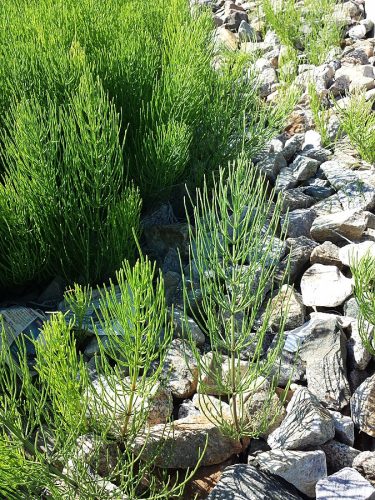Horsetail belongs to the horsetail family (Equisetaceae) . It is a perennial that grows to a maximum height of 40 cm.
Also known as:
Common horsetail
Field horsetail
Mare’s tail
Horsetail – Equisetum arvense – belongs to the horsetail family (Equisetaceae) . It is a perennial that grows to a maximum height of 40 cm. The leafless stems appear in the spring. At the top are the spores. In open ground, horsetail spreads through these spores. Multiplication via the spores does not succeed in overgrown gardens, where horsetail propagates by forming horizontal runners deep underground.
Habitat
Horsetail is native to the temperate and cold regions of the Northern Hemisphere. It dates back to the time of the dinosaurs. Horsetail thrives in poor, acidic and slightly moist soil. Industrial pollution does not bother her. In the (vegetable) garden you will find her along tile edges, walls and between the stones of tile paths.
Control
Horsetail is difficult to control. The roots are deep and difficult to reach. Pieces of roots left behind after a hoeing grow easily again. Manual removal or mechanical (shoveling and milling) will not work. Chemicals have no effect on the plant.
Controling horsetail is a long-term affair: remove ever-emerging shoots and make the soil fertile: fertilize regularly (enriched fertilizer pellets). In addition, increase the pH to neutral (7) or slightly higher (8) by spreading lime. Due to fertilization and a regular dose of lime, good drainage and dense planting, horsetail will feel less and less at home and will therefore disappear in the long run.

NB
Horsetail in the (vegetable) garden means that the soil is not fertile, on the acidic side and moreover (too) moist.
Horsetail can cause poisoning in horses – and also in humans when ingested in large quantities.
Horsetail spray
You can make vulture from horsetail to control pests such as aphids . Look at: Horsetail spray
